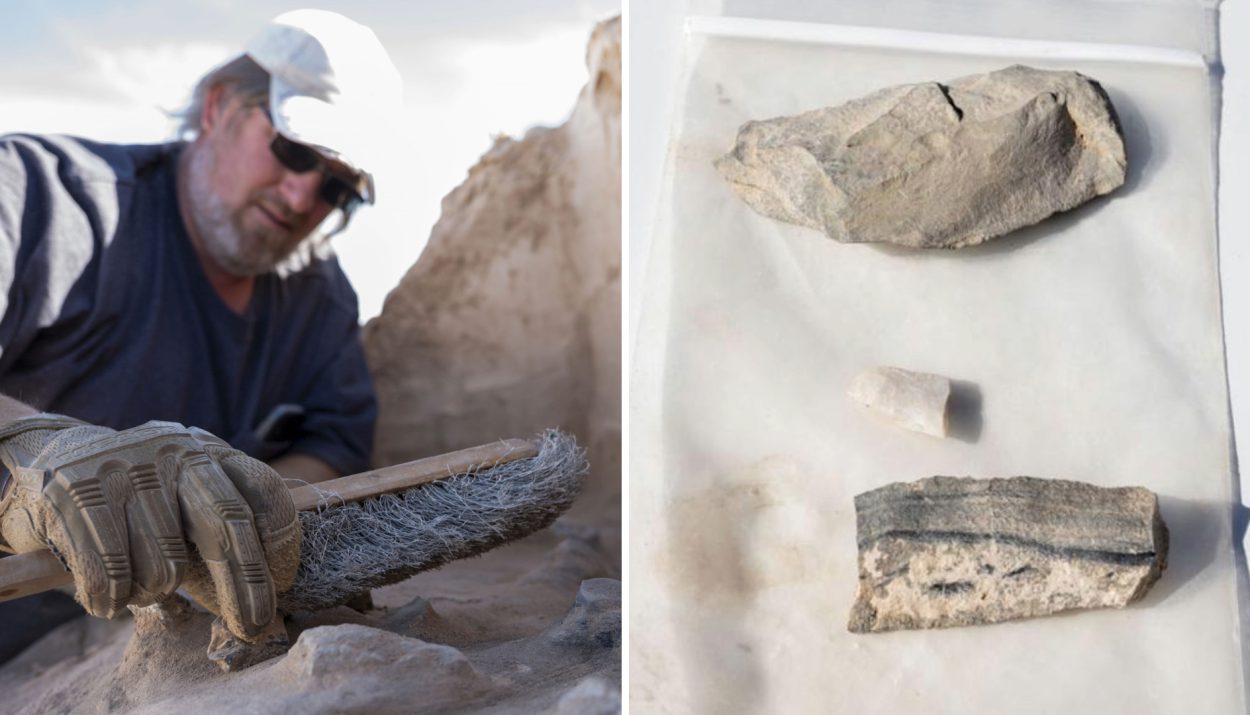A team comprised of members of the military and geologists recently made a remarkable discovery in New Mexico, at a location not far from Holloman Air Force Base and White Sands National Park. They discovered a campsite that was used by the region’s earliest inhabitants.
The prehistoric campsite dates back 8,200 years. It was used as a seasonal home by early people living in New Mexico long before the area was buried under sand dunes.
The 49th Civil Engineer Squadron
Members of the 49th Civil Engineer Squadron, or CES, are credited with making the discovery. Headquartered at Holloman Air Force Base, the 49th CES has a twofold mission. The first is to help the airmen prepare for deployment at a moment’s notice.

The second role of the 49th CES is to build and maintain the infrastructure of Holloman Air Force Base. Since the base covers more than 59,000 acres with 7.4 million square feet of facilities space, this is a big task, but the squadron, whose motto is “Engineers – Lead the Way!,” is up to the job.
Holloman Air Force Base
Holloman Air Force Base was built in 1942 at a location about 160 miles southwest of Albuquerque, New Mexico. The base is home to the 49th Wing of the Air Education and Training Command.

Additionally, Holloman Air Force Base is connected to the White Sands Missile Range, located nearby. It offers support for visiting combat units who train at the missile range.
White Sands National Park
White Sands National Park features the world’s largest gypsum dunefield. The gleaming white gypsum sand is, on average, about 30 feet deep, although some of the dunes are more than 60 feet tall. It was designated a national park in 1933.

Roughly 12,000 years ago, the entire region was a lush grassland with large lakes connected by rivers and streams. When the temperatures rose at the end of the last Ice Age, the melting snow and ice dissolved deposits of gypsum in the surrounding mountains and washed it into the basin. The water evaporated, leaving behind a thick layer of gypsum sand.
The White Sands Missile Range
Since 1941, White Sands National Park has been completely surrounded by the White Sands Missile Range. It was, however, initially called the Alamogordo Bombing and Gunnery Range.
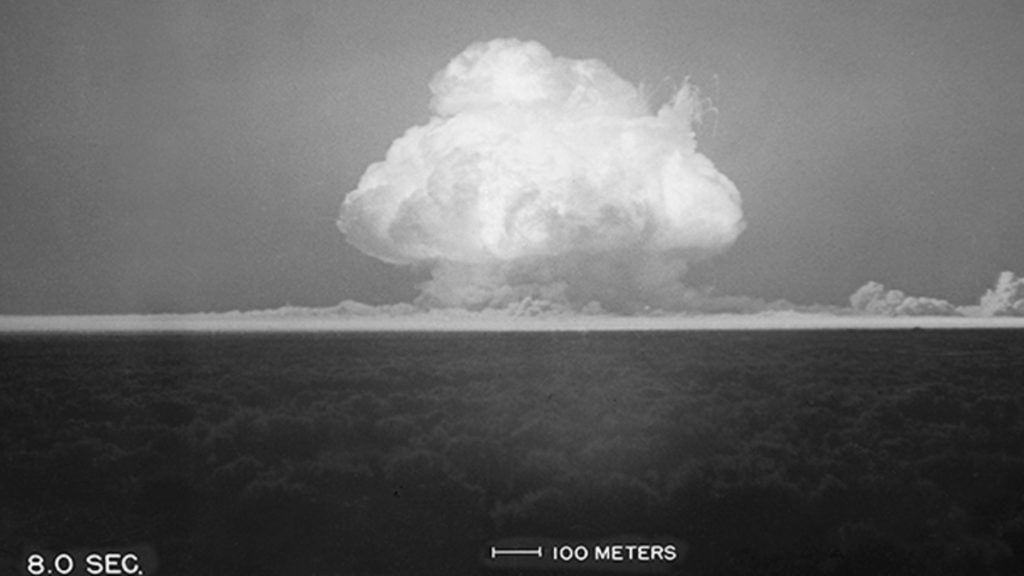
On July 16, 1945, the White Sands Missile Range hosted the test detonation of the first atomic bomb at its Trinity Test Site.
White Sands’ Prehistoric Past
White Sands National Park is also home to the oldest known human footprints in North America. These fossilized footprints are an incredible 23,000 years old.
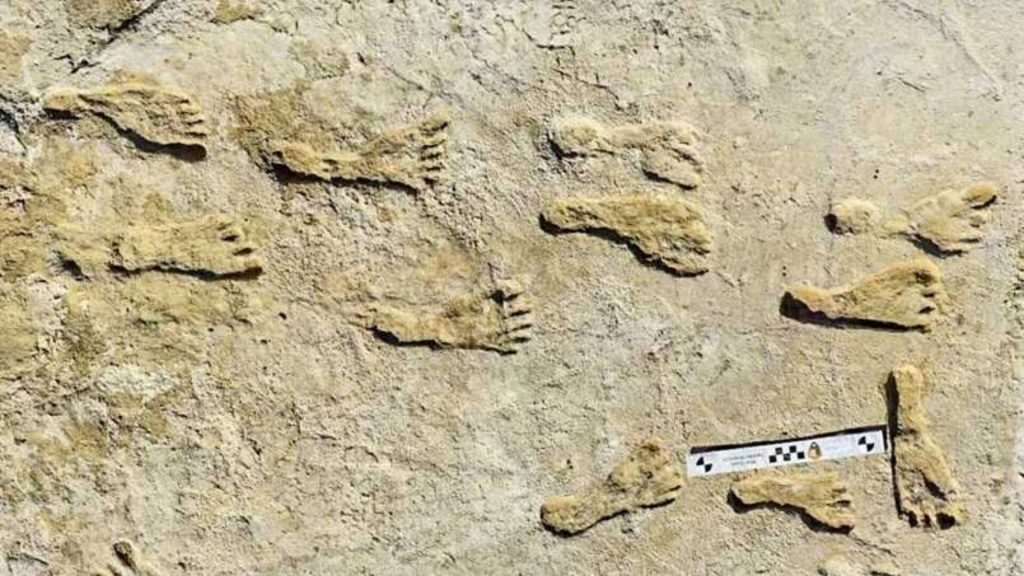
The footprints were made in the mud of Lake Otero and preserved when the area was covered with white gypsum sand. The footprints were made by several different individuals of various ages, giving researchers insight into the lives of North America’s earliest inhabitants.
The Newest Discovery Under the White Sand
In early March 2024, members of the 49th CES along with geologists discovered the remnants of a prehistoric campsite within the borders of Holloman Air Force Base. The location of the site was not far from one of the base’s roads, but it was hidden from view some six feet under the white sand.
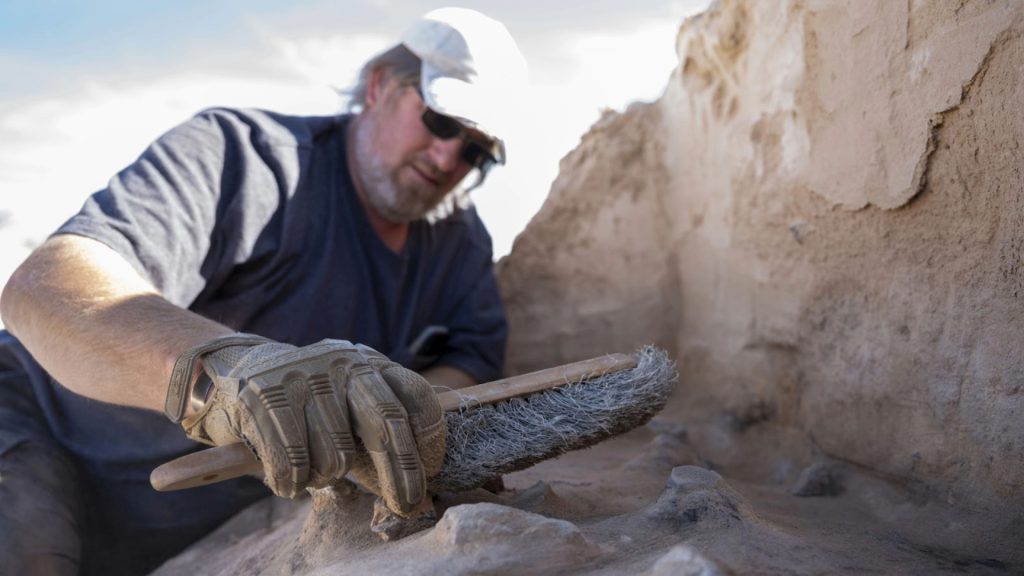
The site of the ancient campsite was named Gomolak Overlook. Evidence strongly suggests that the camp was in use more than 8,200 years ago.
Buried and Preserved
When the dune of White Sand National Park formed more than 1,000 after the campsite was used, the site was covered. As Matthew Cuba, the cultural resource manager of the 49th CES explained, “The formation of the white sand dunes inadvertently buried the site, with windblown silt protecting the delicate archaeological remains.”
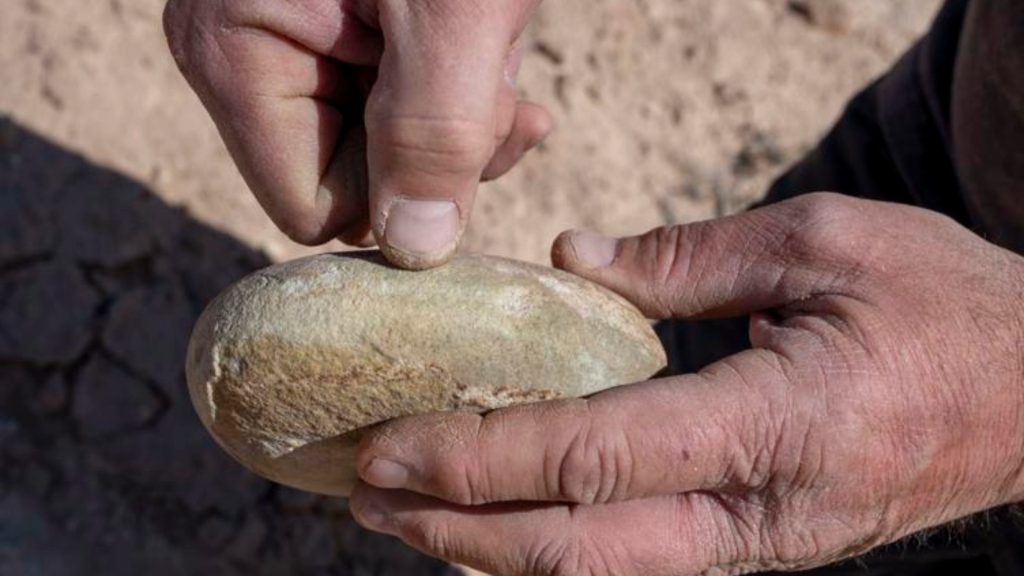
Cuba, who participated in the excavation of the prehistoric campsite, added, “This site marks a pivotal moment in shedding light on the area’s history and its early inhabitants.”
Who Were New Mexico’s First Settlers?
Based on the artifacts found at Gomolak Overlook, the researchers believe the area may have been used as a seasonal encampment by New Mexico’s first settlers. Just who these people were and where they came from, however, is the subject of much speculation.
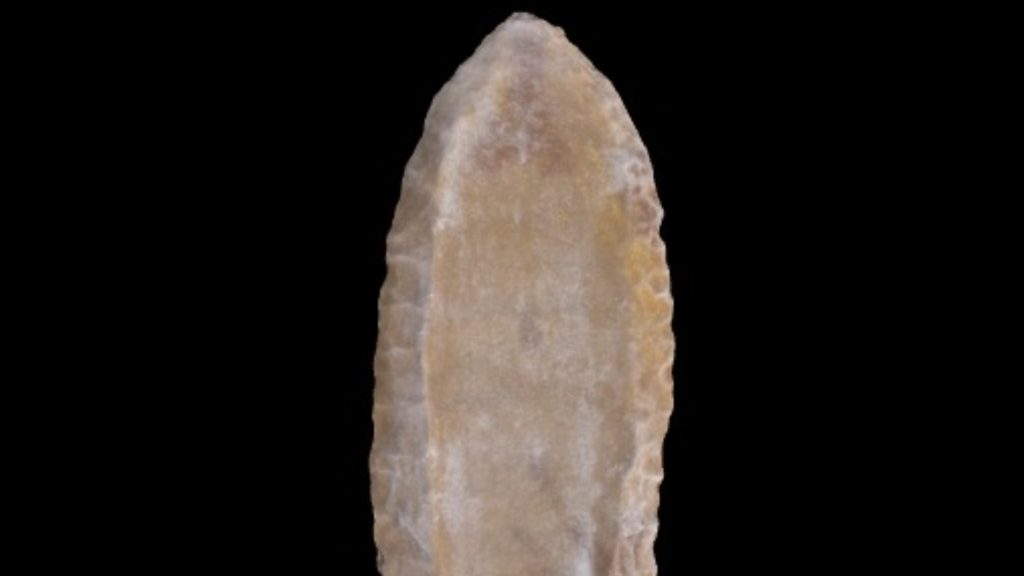
The leading candidates are the Folsom people, a prehistoric North American culture that existed between 10,000 and 8,000 years ago. Nomadic hunter-gatherers, the Folsom people were skilled toolmakers and created distinctive spear points. An important clue was found at the campsite.
Artifacts Found at the Ancient Campsite
According to Cuba, more than 70 different artifacts were recovered from the ancient campsite, “ranging from flake stones to a rare example of an early ground stone, providing valuable clues about past human activities.” The stone flakes are evidence of tool making.
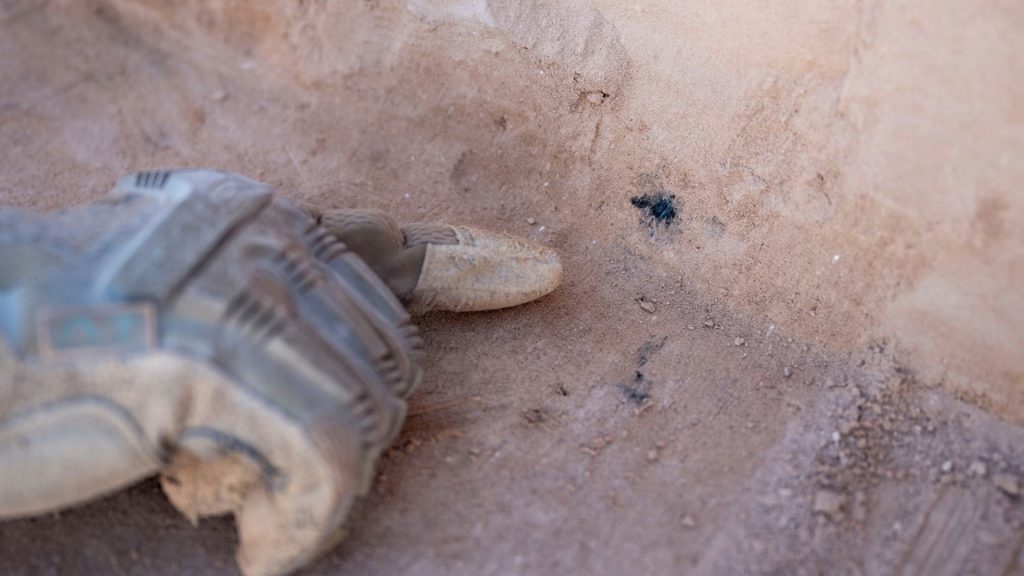
He added, “We also uncovered a series of hearths, or community campsites, with remnants of mesquite charcoal, which is a tremendous find in and of itself.” Mesquite is a common shrub that is native to the dry, desert regions of the American southwest.
A Long List of Archaeological Discoveries at Holloman Air Force Base
The discovery of the prehistoric campsite at Gomolak Overlook in New Mexico joins the long list of other archaeological discoveries that have been made on the grounds of Holloman Air Force Base.
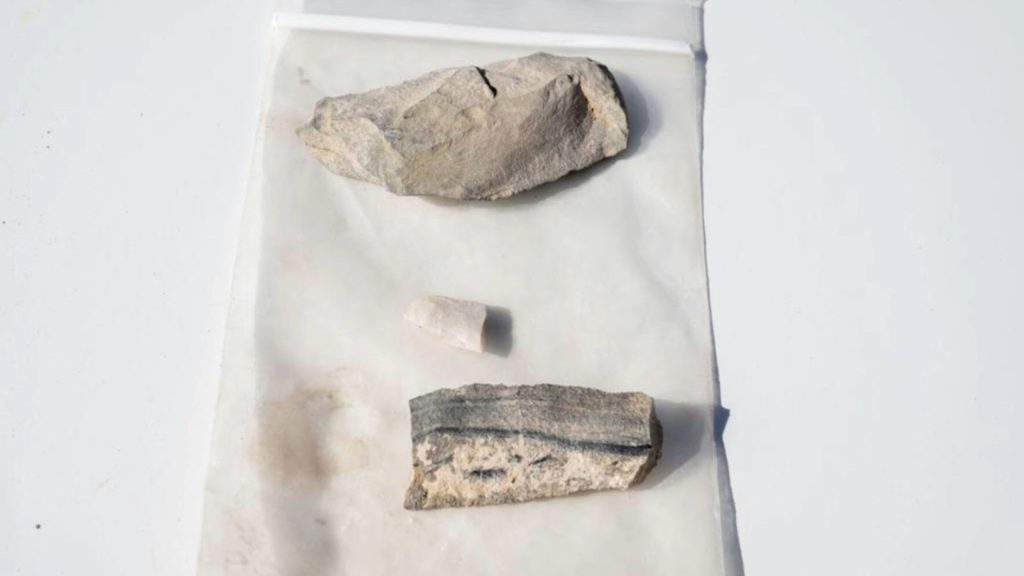
In fact, some 400 discoveries have been found so far. As Cuba noted, each new discovery sheds new light on the early humans who lived in the area.
Learning More About New Mexico’s Ancient Past
Cuba added that the 49th CES is committed to ongoing archaeological excavations of the area. They hope to learn more about New Mexico’s first inhabitants, as well as how the environment of the region changed so drastically.
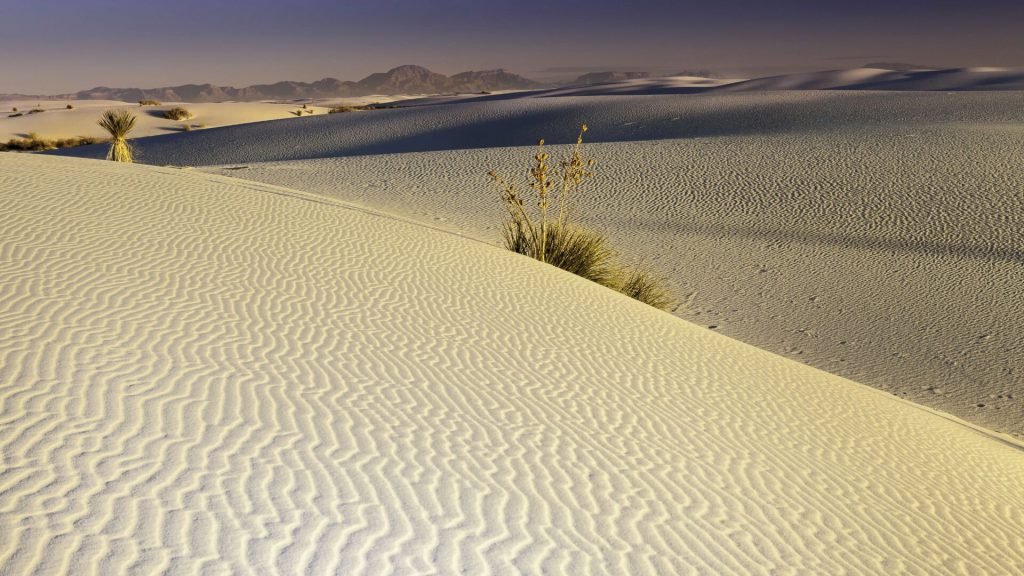
“The future holds plenty of promise for even more fascinating finds,” he said.

